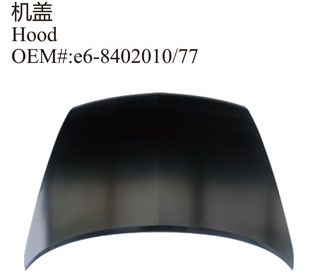The difference between automobile stamping parts and castings is that stamping parts are thin, uniform, light and strong, which can make workpieces with stiffeners, ribs, undulation or flanging that are difficult to be made by other methods, so as to improve their rigidity. Due to the use of precision dies, the accuracy of workpieces can reach micron level, and the difference between heavy stamping parts and castings: workpieces with stiffeners, ribs, undulations or flanging that are difficult to manufacture by other methods can be made by stamping with the characteristics of thin, uniform, light and strong, so as to improve their rigidity. Due to the use of precision die, the precision of workpiece can reach micron level, and the repetition precision is high, the specification is consistent, and the hole and socket, boss, etc. can be punched.

Rockwell hardness tester is used to test the hardness of metal stamping parts. Small stamping parts with complex shape can be used to test the small plane, which can not be tested on ordinary Rockwell hardness tester.
The properties of castings directly affect the quality of processing, and the hardness value is an important index to determine the processing of castings.
1. Brinell hardness: it is mainly used to measure the hardness of castings, forgings, non-ferrous metal parts, hot rolled billets and annealed parts, and the measurement range is no more than hb450.
2. Rockwell hardness: HRA is mainly used for high hardness test pieces. It is used to measure the hardness of materials and surfaces with hardness higher than hrc67, such as cemented carbide, nitriding steel, etc., with the measurement range of HRA > 70. HRC is mainly used to determine the hardness of steel parts (such as carbon steel, tool steel, alloy steel, etc.) after quenching or tempering, with the measurement range of hrc20 ~ 67.
3. Vickers hardness: it is used to measure the hardness of sheet metal and steel plate, and also used to measure the hardness of surface hardening parts such as carburizing, cyaniding, nitriding, etc.
Stamping is mainly classified by process, which can be divided into separation process and forming process. The purpose of the separation process is to separate the stamping parts from the sheet along a certain contour line and ensure the quality requirements of the separation section. Rongzhi automobile stamping parts show that stamping is an efficient production method. By using compound die, especially multi position progressive die, multiple stamping processes can be completed on a press, realizing full-automatic production from uncoiling, leveling, punching to forming and finishing of strip. It has high production efficiency, good working conditions and low production cost. Generally, it can produce hundreds of pieces per minute. The purpose of forming process is to make the sheet metal plastic deformation without breaking the blank, and to make the required shape and size of the workpiece. In actual production, it is often a variety of processes applied to a workpiece. Punching, bending, shearing, drawing, bulging, spinning and straightening are the main stamping work.
Casting is a kind of metal molded object obtained by various casting methods, that is, the molten metal is poured into the prepared mold by pouring, injection, suction or other casting methods, and then it is cooled, sand is dropped, cleaned and post-treatment, etc., and the object with certain shape, size and performance is obtained.
Copyright By © Jiangsu Halreal Vehicle Industry Co., Ltd. Powered by Yicheng Network